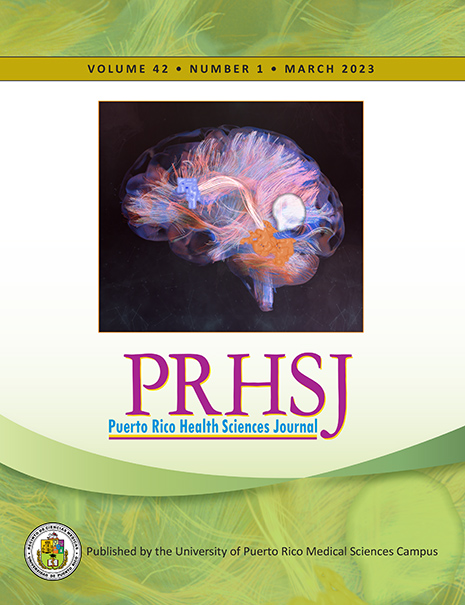Abstract
Objective: The analysis of morbidity and mortality is fundamental for improving the quality of patient care. The objective of this study was to evaluate the combined medical and surgical morbidity and mortality of neurosurgical patients. Methods: We performed a daily prospective compilation of morbidities and mortalities during a consecutive 4-month period in all the patients who were 18 years of age or older and had been admitted to the neurosurgery service at the Puerto Rico Medical Center. For each patient, any surgical or medical complication, adverse event, or death within 30 days was included. The patients’ comorbidities were analyzed for their influence on mortality. Results: Fifty-seven percent of the patients presented at least 1 complication. The most frequent complications were hypertensive episodes, mechanical ventilation for more than 48 hours, sodium disturbances, and bronchopneumonia. Twenty-one patients died, for an overall 30-day mortality of 8.2%. Mechanical ventilation for more than 48 hours, sodium disturbances, bronchopneumonia, unplanned intubation, acute kidney injury, blood transfusion, shock, urinary tract infection, cardiac arrest, arrhythmia, bacteremia, ventriculitis, sepsis, elevated intracranial pressure, vasospasm, stroke, and hydrocephalus were significant factors for mortality. None of the analyzed patients’ comorbidities were significant for mortality or longer length of stay. The type of surgical procedure did not influence the length of stay. Conclusion: The mortality and morbidity analysis provided valuable neurosurgical information that may influence future treatment management and corrective recommendations. Indication and judgment errors were significantly associated with mortality. In our study, the patients’ comorbidities were not significant for mortality or increased length of stay.
Authors who publish with this journal agree to the following terms:
a. Authors retain copyright and grant the journal right of first publication with the work simultaneously licensed under a Creative Commons Attribution License that allows others to share the work with an acknowledgement of the work's authorship and initial publication in this journal.
b. Authors are able to enter into separate, additional contractual arrangements for the non-exclusive distribution of the journal's published version of the work (e.g., post it to an institutional repository or publish it in a book), with an acknowledgement of its initial publication in this journal.
c. Authors are permitted and encouraged to post their work online (e.g., in institutional repositories or on their website) prior to and during the submission process, as it can lead to productive exchanges, as well as earlier and greater citation of published work (See The Effect of Open Access).
